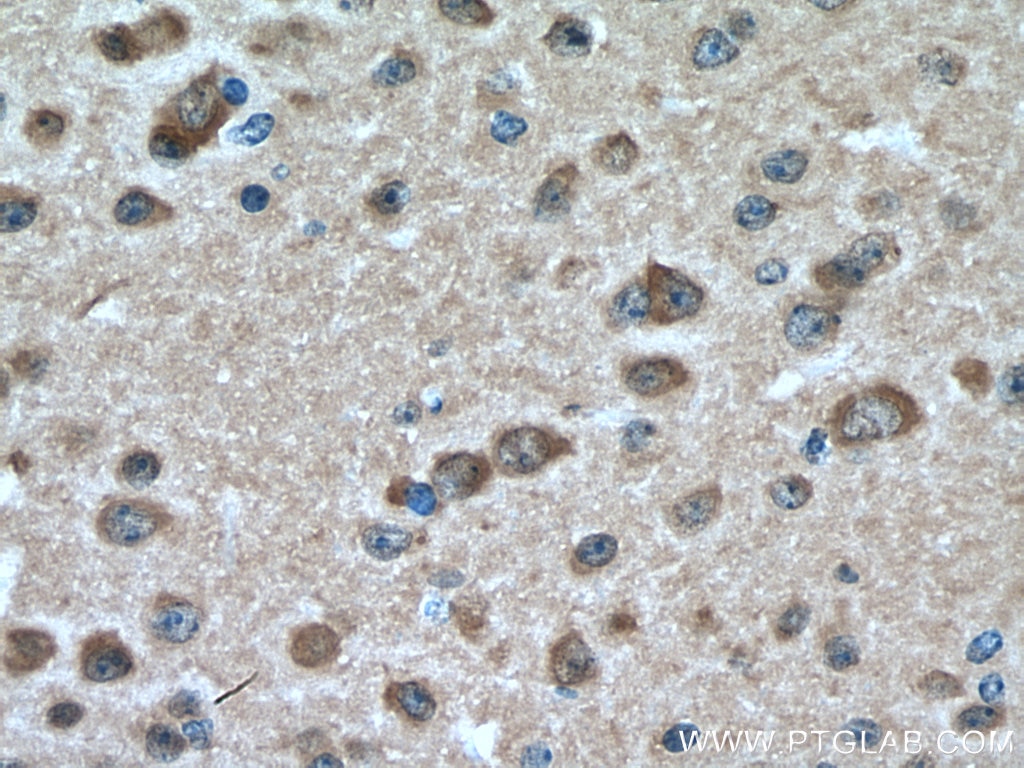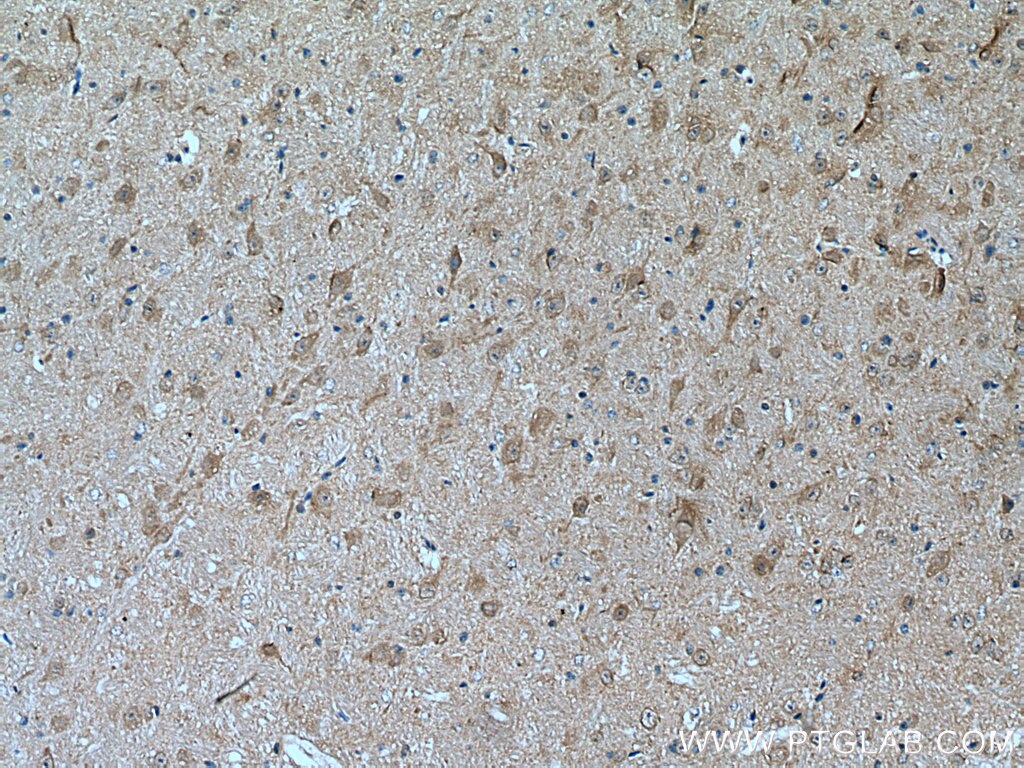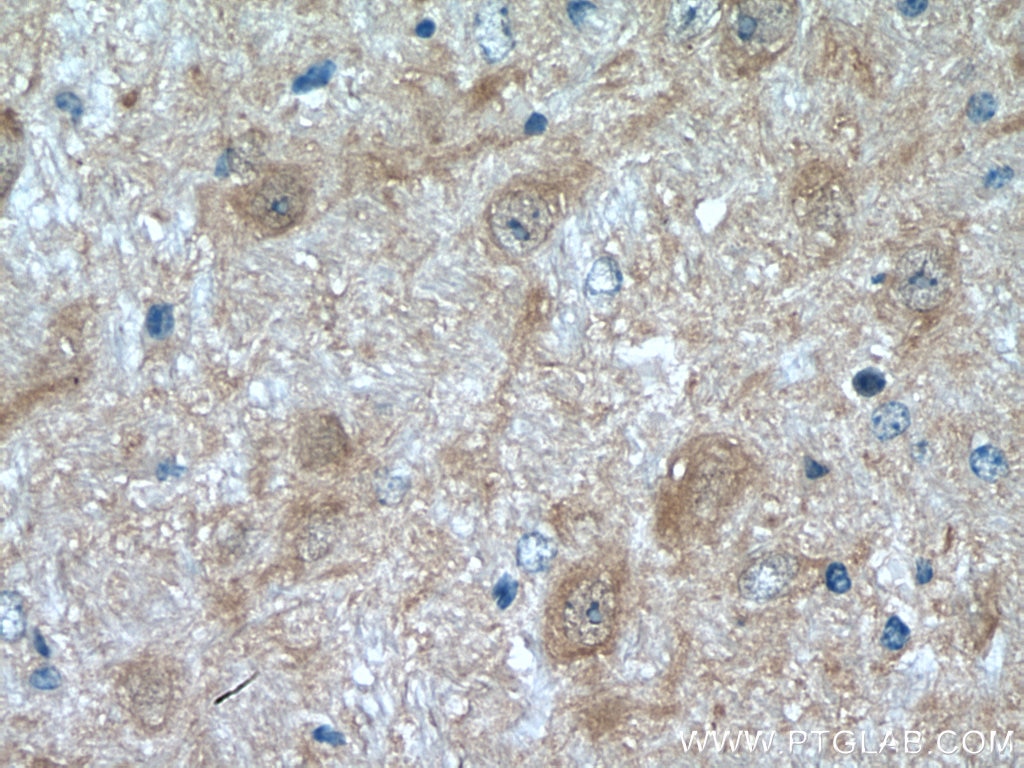Anticorps Polyclonal de lapin anti-JNK
JNK Polyclonal Antibody for WB, IHC, ELISA
Hôte / Isotype
Lapin / IgG
Réactivité testée
canin, Humain, souris et plus (1)
Applications
WB, IHC, ELISA
Conjugaison
Non conjugué
N° de cat : 28007-1-AP
Synonymes
Galerie de données de validation
Applications testées
| Résultats positifs en WB | cellules Neuro-2a, cellules MDCK, tissu cérébral de souris, tissu de cervelet de souris |
| Résultats positifs en IHC | tissu cérébral de souris, tissu de cervelet de souris il est suggéré de démasquer l'antigène avec un tampon de TE buffer pH 9.0; (*) À défaut, 'le démasquage de l'antigène peut être 'effectué avec un tampon citrate pH 6,0. |
Dilution recommandée
| Application | Dilution |
|---|---|
| Western Blot (WB) | WB : 1:1000-1:4000 |
| Immunohistochimie (IHC) | IHC : 1:50-1:500 |
| It is recommended that this reagent should be titrated in each testing system to obtain optimal results. | |
| Sample-dependent, check data in validation data gallery | |
Applications publiées
| WB | See 5 publications below |
Informations sur le produit
28007-1-AP cible JNK dans les applications de WB, IHC, ELISA et montre une réactivité avec des échantillons canin, Humain, souris
| Réactivité | canin, Humain, souris |
| Réactivité citée | rat, Humain, souris |
| Hôte / Isotype | Lapin / IgG |
| Clonalité | Polyclonal |
| Type | Anticorps |
| Immunogène | JNK Protéine recombinante Ag27823 |
| Nom complet | mitogen-activated protein kinase 10 |
| Masse moléculaire calculée | 464 aa, 53 kDa |
| Poids moléculaire observé | 45-48 kDa, 54-57 kDa |
| Numéro d’acquisition GenBank | BC065516 |
| Symbole du gène | JNK3 |
| Identification du gène (NCBI) | 5602 |
| Conjugaison | Non conjugué |
| Forme | Liquide |
| Méthode de purification | Purification par affinité contre l'antigène |
| Tampon de stockage | PBS with 0.02% sodium azide and 50% glycerol |
| Conditions de stockage | Stocker à -20°C. Stable pendant un an après l'expédition. L'aliquotage n'est pas nécessaire pour le stockage à -20oC Les 20ul contiennent 0,1% de BSA. |
Informations générales
JNK, also named MAPK10 (mitogen-activated protein kinase 10), belongs to MAP kinase family. MAP kinases act as integration points for multiple biochemical signals, and thus are involved in a wide variety of cellular processes, such as proliferation, differentiation, transcription regulation and development. This kinase is mainly expressed in a subset of neurons in the nervous system, and is activated by threonine and tyrosine phosphorylation. JNK has 3 isoforms of 48-53 kDa.
Protocole
| Product Specific Protocols | |
|---|---|
| WB protocol for JNK antibody 28007-1-AP | Download protocol |
| IHC protocol for JNK antibody 28007-1-AP | Download protocol |
| Standard Protocols | |
|---|---|
| Click here to view our Standard Protocols |
Publications
| Species | Application | Title |
|---|---|---|
Sci Total Environ Exploring potential targets and mechanisms of renal tissue damage caused by N-(1,3-dimethylbutyl)-N'-phenyl-p-phenylenediamine quinone (6-PPDQ) through network toxicology and animal experiments: A case of chronic kidney disease | ||
Front Immunol Identification of ALDH2 as a novel target for the treatment of acute kidney injury in kidney transplantation based on WGCNA and machine learning algorithms and exploration of its potential mechanism of action using animal experiments | ||
Int J Biol Macromol VSIG4 inhibits RANKL-induced osteoclastogenesis by enhancing Nrf2-dependent antioxidant response against reactive oxygen species production | ||
Int Immunopharmacol Molecular mechanisms and potential targets of lycopene for alleviating renal ischemia-reperfusion injury revealed by network pharmacology and animal experiments | ||
Nat Commun SARS-CoV-2 N protein-induced Dicer, XPO5, SRSF3, and hnRNPA3 downregulation causes pneumonia |






